How do gravity and drag affect a pitch? What's the best way to make a curveball break? And what will break more: a beach ball or a Wiffle Ball?
Through MIT's Science of Baseball Program, a group of local middle school boys took to MIT's classrooms and fields this summer to find the answers to those questions.
Now in its fourth year, the program draws upon America's pastime to excite the students about science and mathematics. Students learn about the principles of the game in the morning, and then take to the diamond in the afternoon to apply what they've learned. They also take home valuable lessons about teamwork and problem solving.
Learn more about the program
MIT outreach program uses America’s pastime to hook boys on math and physics
Publication Date:
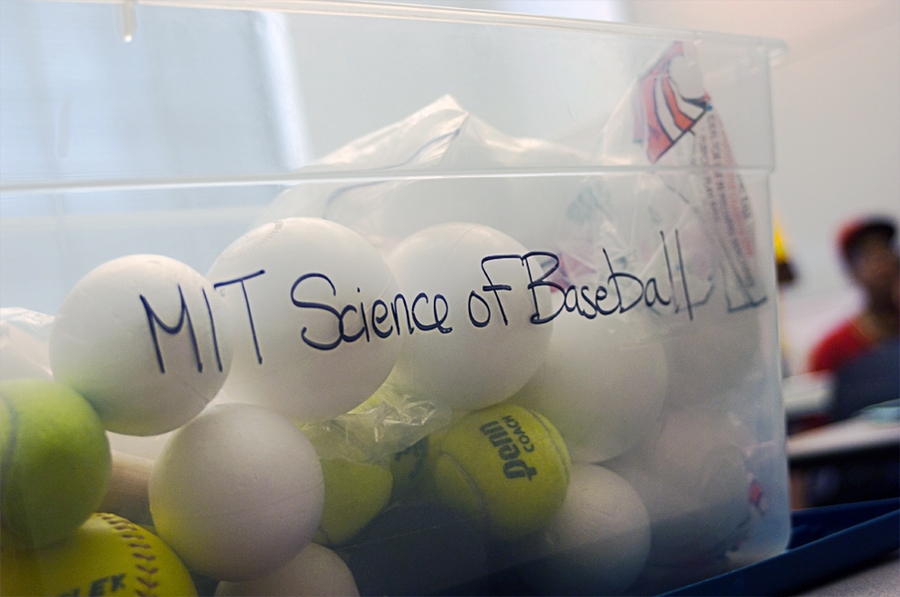
Caption:
The Science of Baseball is a four-week summer program at MIT focused on the principles of math, physics and statistics as they apply to baseball. Approximately 40 middle-school-aged boys from the Boston/Cambridge area split their days between morning science classes and afternoons on the ball field.
Credits:
Photo: Patrick Gillooly
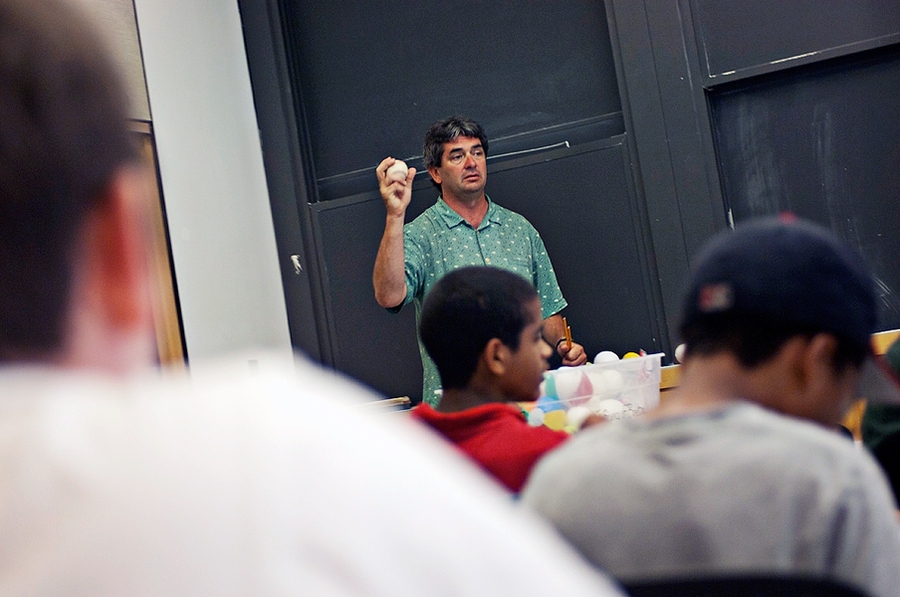
Caption:
Andy Andres, the head coach and program instructor, teaches students about aerodynamics and how the principles of drag and lift apply to a baseball.
Credits:
Photo: Patrick Gillooly
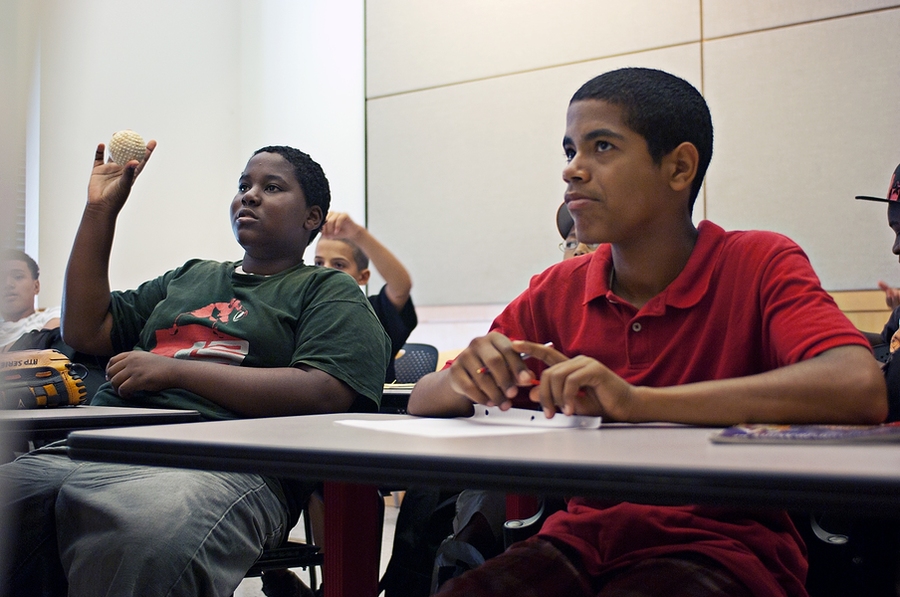
Caption:
Students are shown a variety of balls of different sizes and materials and are asked to predict which will experience the most break when thrown at a target drawn on the blackboard.
Credits:
Photo: Patrick Gillooly
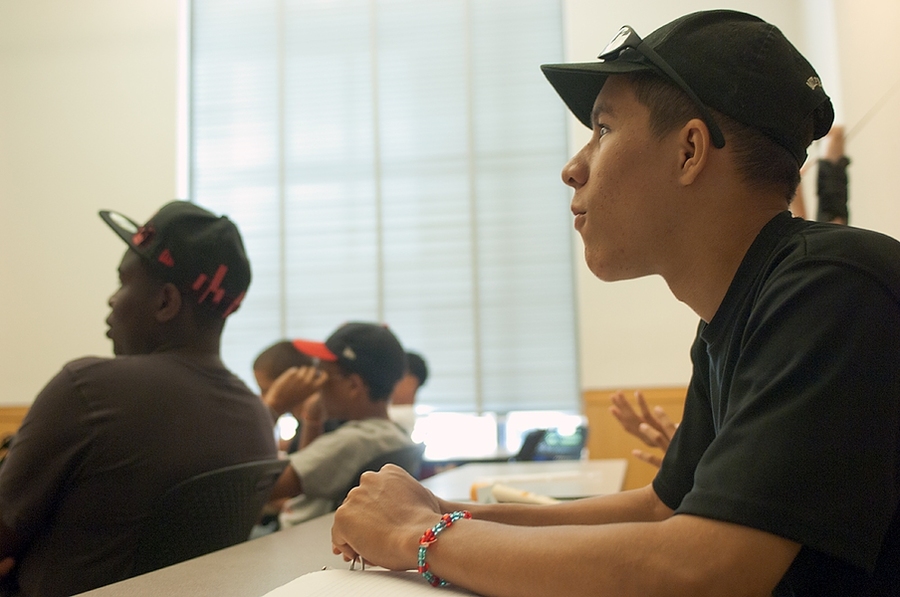
Caption:
Members of the class discuss how fast balls and knuckle balls are affected by the laws of fluid dynamics.
Credits:
Photo: Patrick Gillooly
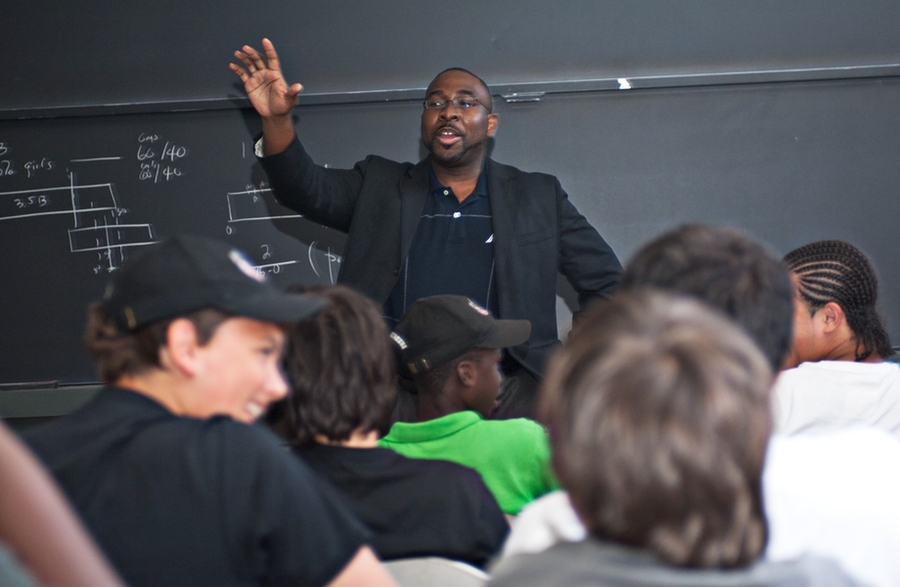
Caption:
Dedric Carter, assistant dean for development and strategic initiatives in the MIT School of Engineering, shows the students how to apply what they learn in engineering classes to issues in their lives. Carter, the former director of the program, encouraged the boys to work hard in school, to set goals and to be curious and ask questions.
Credits:
Photo: Patrick Gillooly
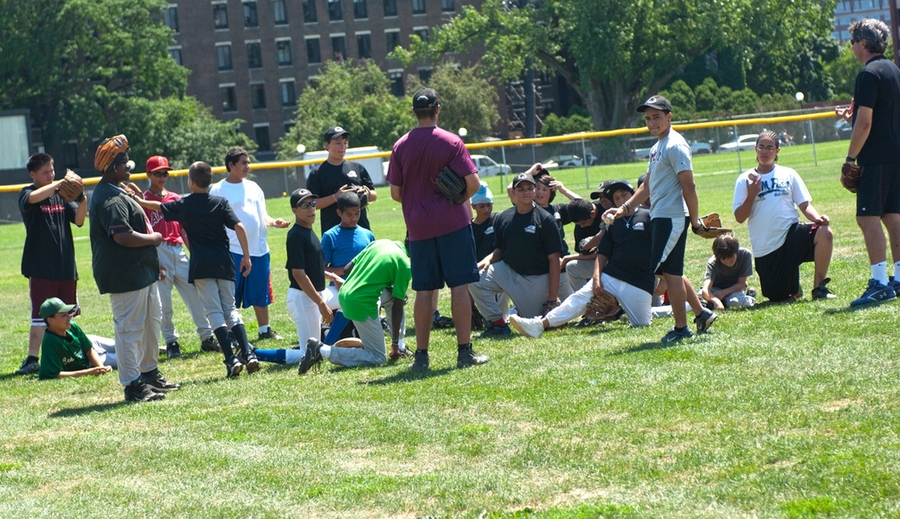
Caption:
After lunch, the program spends the afternoon on MIT's varsity baseball field.
Credits:
Photo: Patrick Gillooly
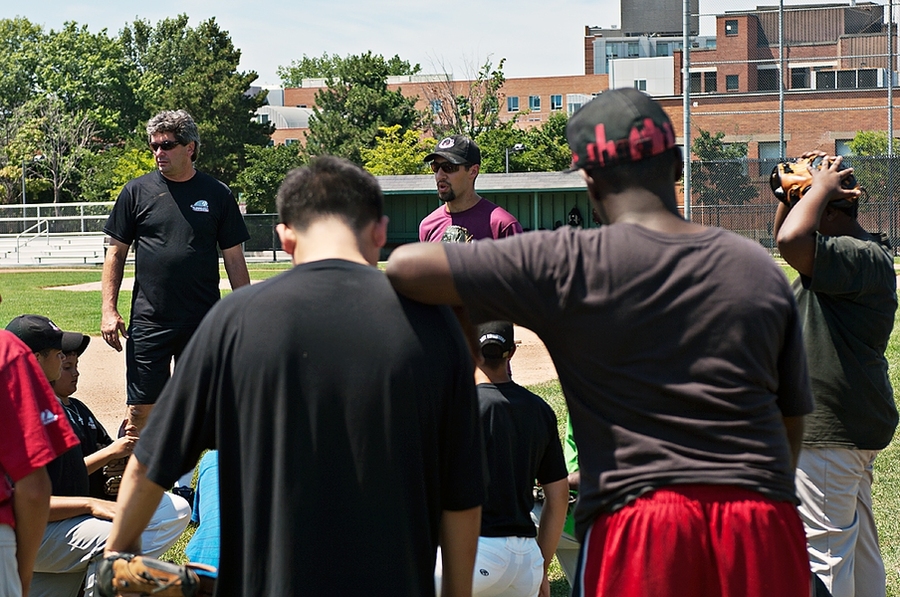
Caption:
After warm ups, but before hitting the field, Andres talks to the players about showing respect for the team and the importance of staying positive during the game.
Credits:
Photo: Patrick Gillooly
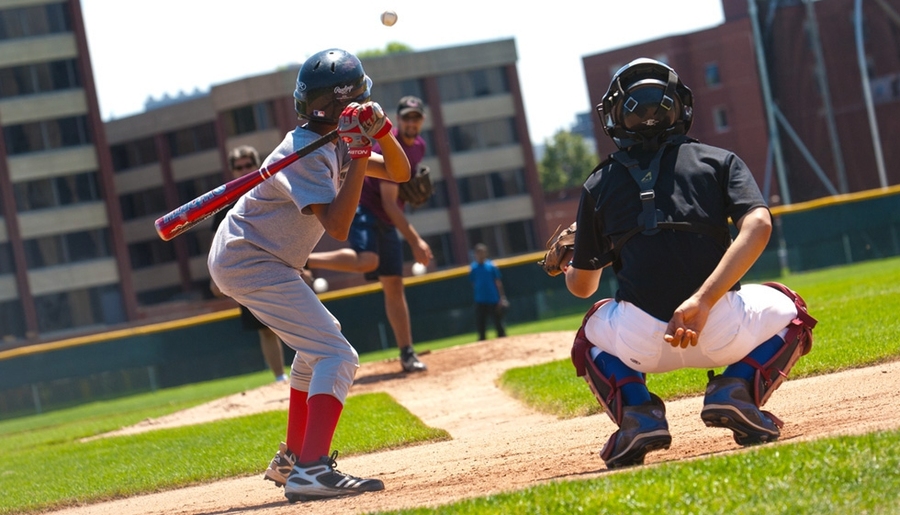
Caption:
The players hit the field in the afternoon to put what they have learned into practice.
Credits:
Photo: Patrick Gillooly
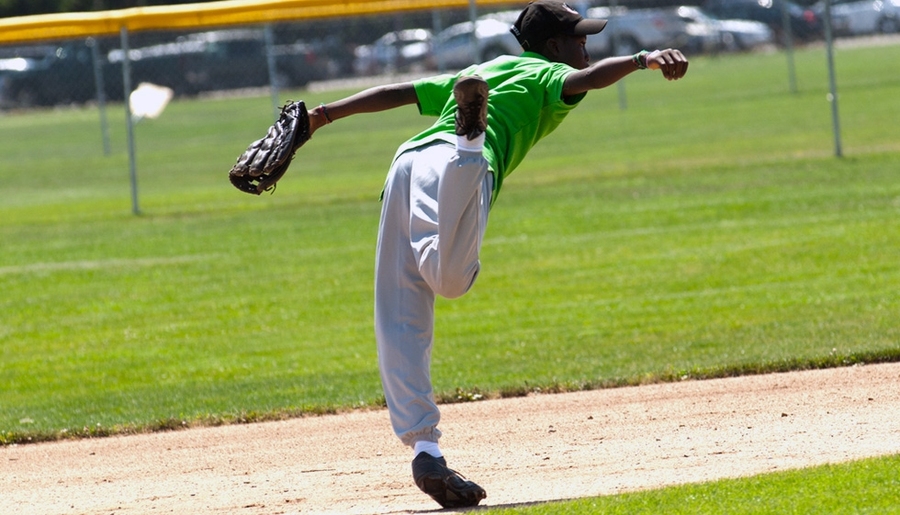
Caption:
The players hit the field in the afternoon to put what they have learned into practice.
Credits:
Photo: Patrick Gillooly
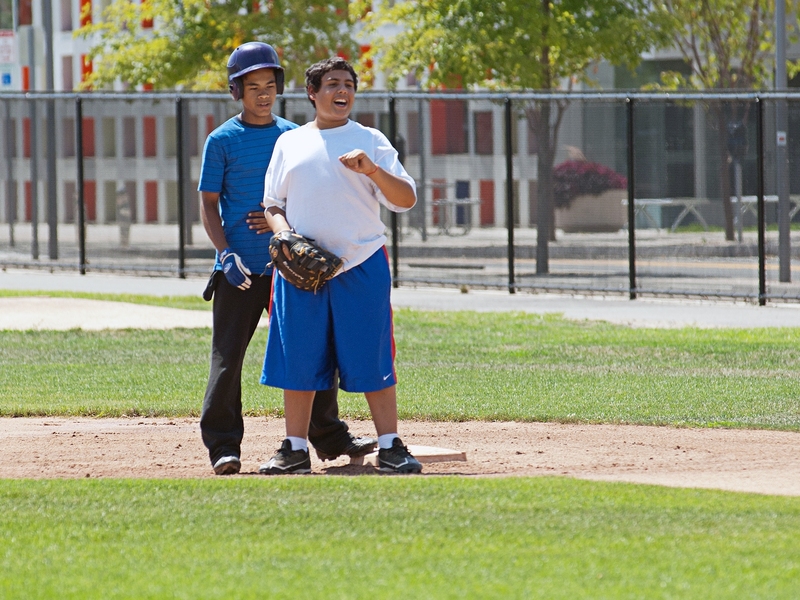
Caption:
The players hit the field in the afternoon to put what they have learned into practice.
Credits:
Photo: Patrick Gillooly

Caption:
The players hit the field in the afternoon to put what they have learned into practice.
Credits:
Photo: Patrick Gillooly
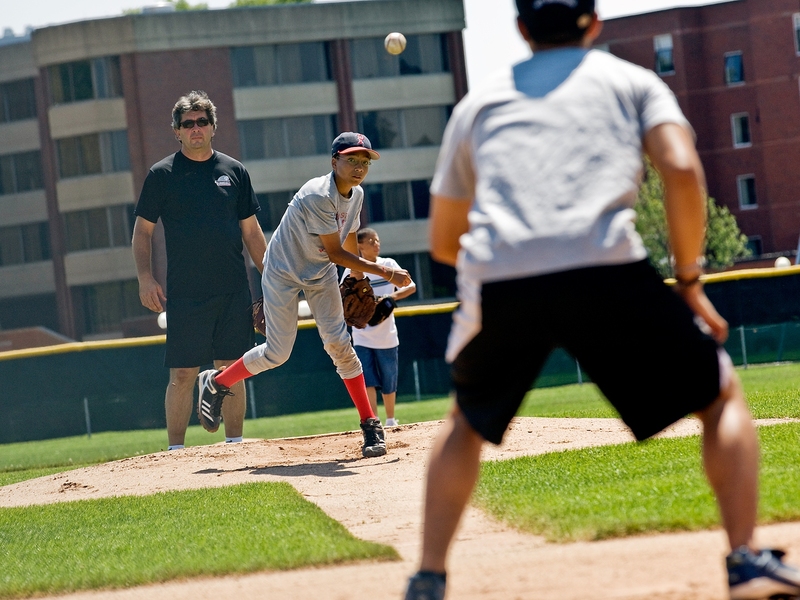
Caption:
The players hit the field in the afternoon to put what they have learned into practice.
Credits:
Photo: Patrick Gillooly





